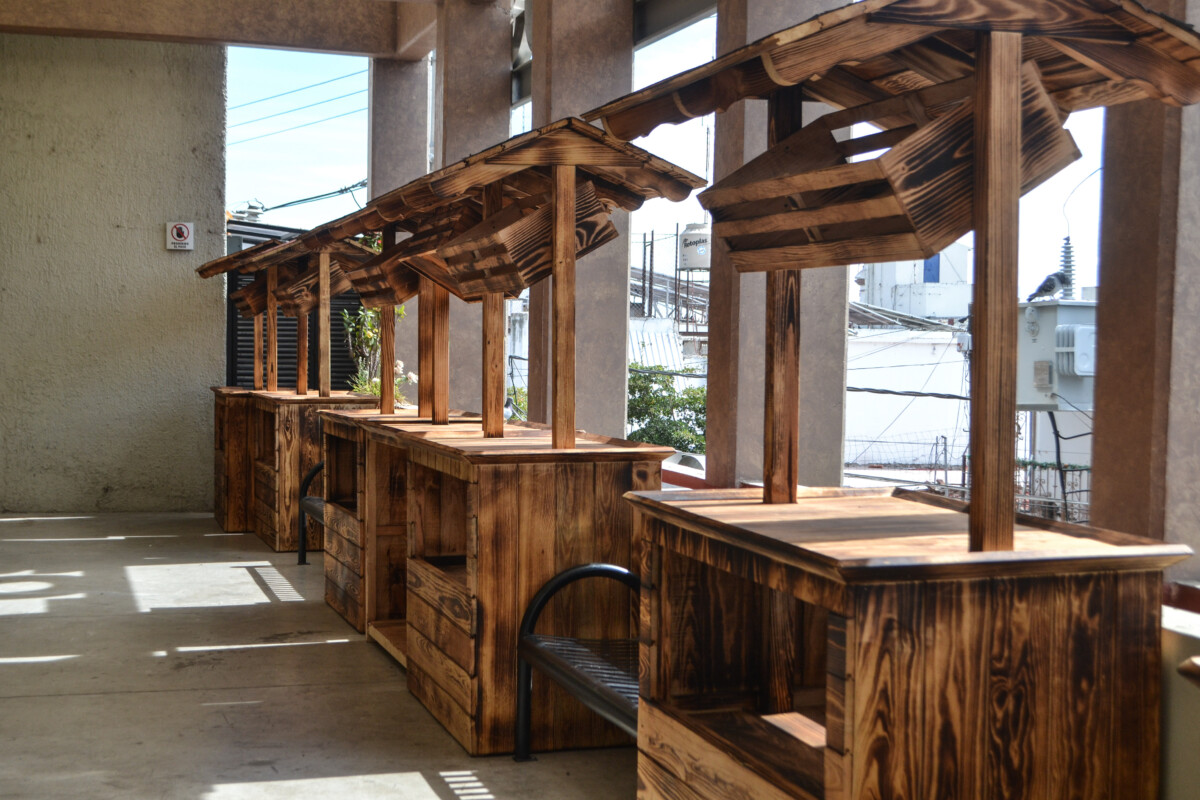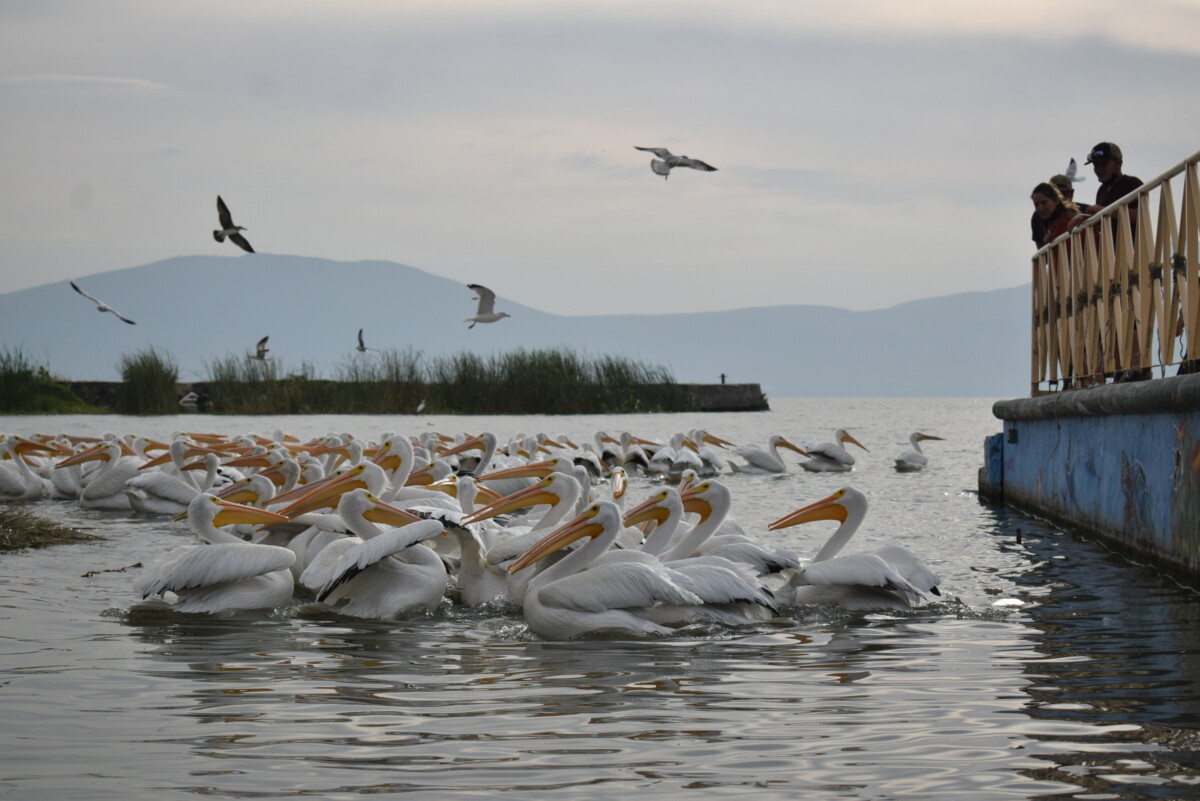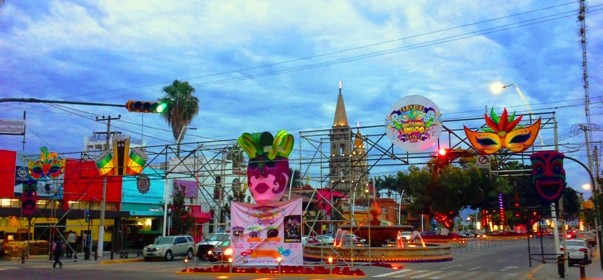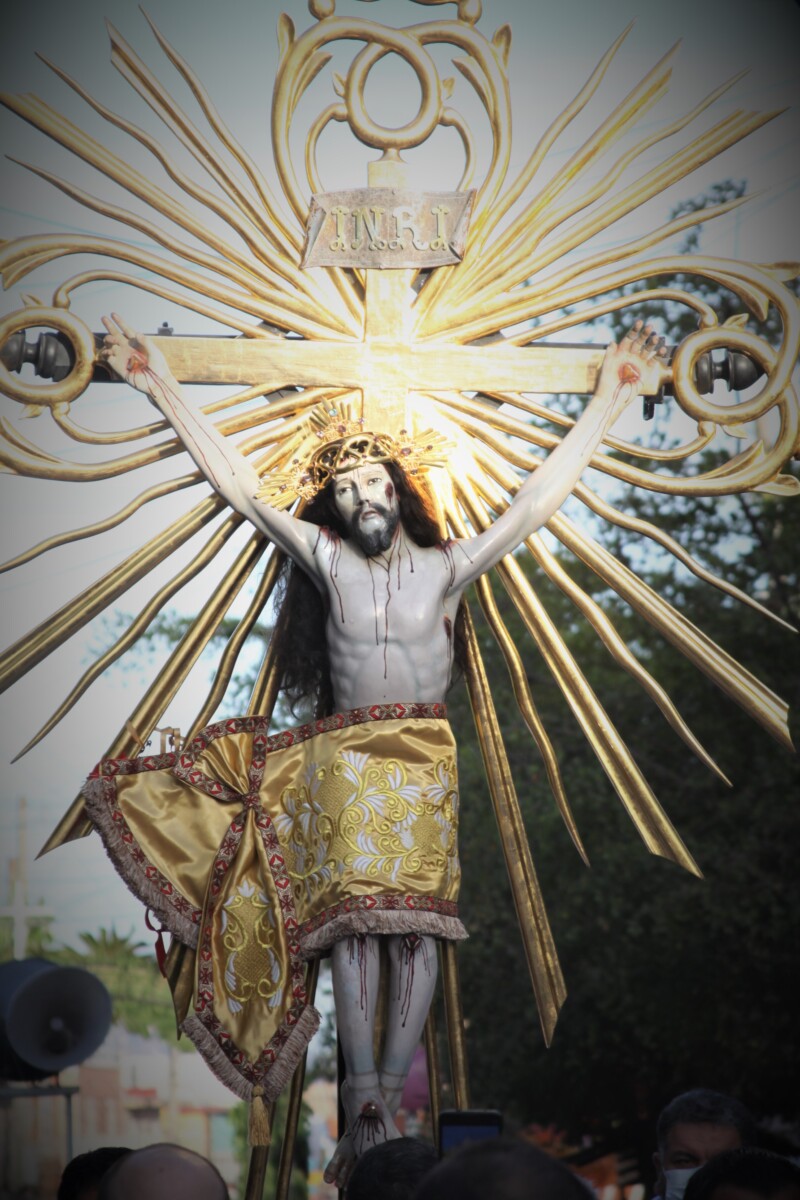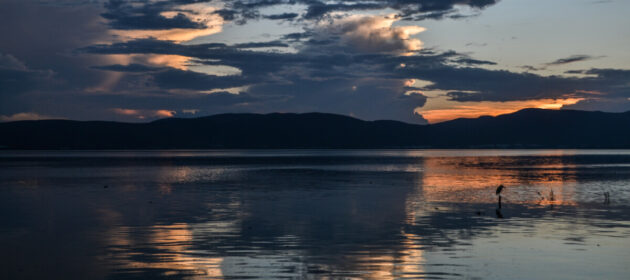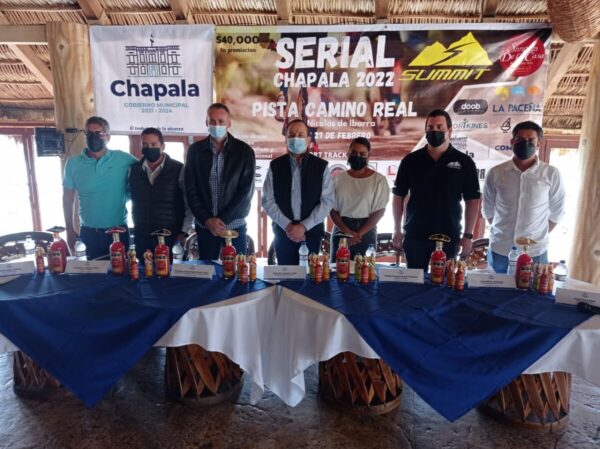Turismo
Ajijic Artist Restores Mural near Malecón
Mural of Michi Cihualli, located at the intersection of Morelos and Del Paseo.
Sofía Medeles (Ajijic, Jal.) – Artist Jesús López Vega will restore one of his several murals, the mural featuring Michi Cihualli (the Goddess of Lake Chapala). The artwork is located at the intersection of Morelos and Del Paseo, where Ajijic Tango restaurant is currently located.López Vega said that the mural is approximately eight years old, and that he is glad that he was asked to maintain it, «I thought it was going to be removed with all the new the works that were recently completed, and although they did whitewash a part over the mural, it can be restored. I had to repaint that part, in addition to the restoration.»This property has murals by other artists, such as José Durán, and Javier Zaragoza, which were also recently renovated. López Vega added that he is pleased with the location of the mural close to the lake. He hopes that both tourists and locals can learn a little more about the legend of Michi Cihualli via his mural.
López Vega commented that the legend of Michi Cihualli caught his attention after reading a writing on pre-Hispanic mythology by Jesús González Gortazar. With time and research, he found out that an author named Tapia, had documented that in the lake of nearby Cajititlán they had the same goddess of the lake, strongly suggesting that Michi Cihualli spans more than one region, and may be a divinity of the coca culture.
Translated by Amy Esperanto
Gate installed at Ajijic cemetery to prevent dumping
The gate of the cemetery creek, which was replaced last Monday, January 17.
Sofía Medeles (Ajijic, Jal.) – The creekbed located inside the Ajijic cemetery will no longer be used as a garbage dump, as of last Monday, January 17. Personnel from the Delegation took charge of putting the gate back in place.
According to some testimonies, approximately five years ago the gate was knocked down by a private vehicle and had never been put back in place.
According to Maximiliano Macías Arceo, the Ajijic delegado, the creekbed has been cleaned three times since the administration began, a little over 100 days ago. The neighbors are so used to throwing garbage in that place that the day the gate was put back up (while the delegado and his assistants left to get a chain to secure the gate), garbage had been thrown in the creekbed during their brief absence.
Macías Arceo commented that the creek is used as a dumping ground for different types of waste, ranging from leaf litter and garden waste, to debris and other types of garbage, which causes many complaints because the creek was used as if it were a garbage dump.
«There were many reports of people littering. An elderly man thanked us for putting back the gate that was just lying there, and we told him that it was mostly because it is not possible for us to clean up so often,” stated the person in charge of the office.
As for the northern part of the cemetery, at the entrance on the Chapala-Jocotepec highway where the bridge is located, Macías Arceo was asked if the Delegation would take steps to prevent littering there as well. Macías Arceo said that he is aware that, in addition to littering, some people use the site as a restroom. The place gives off a strong odor, so he intends to contact the director of Public Works to find a solution, such as putting up some fences to block access to the part of the creek that crosses the cemetery of Ajijic.
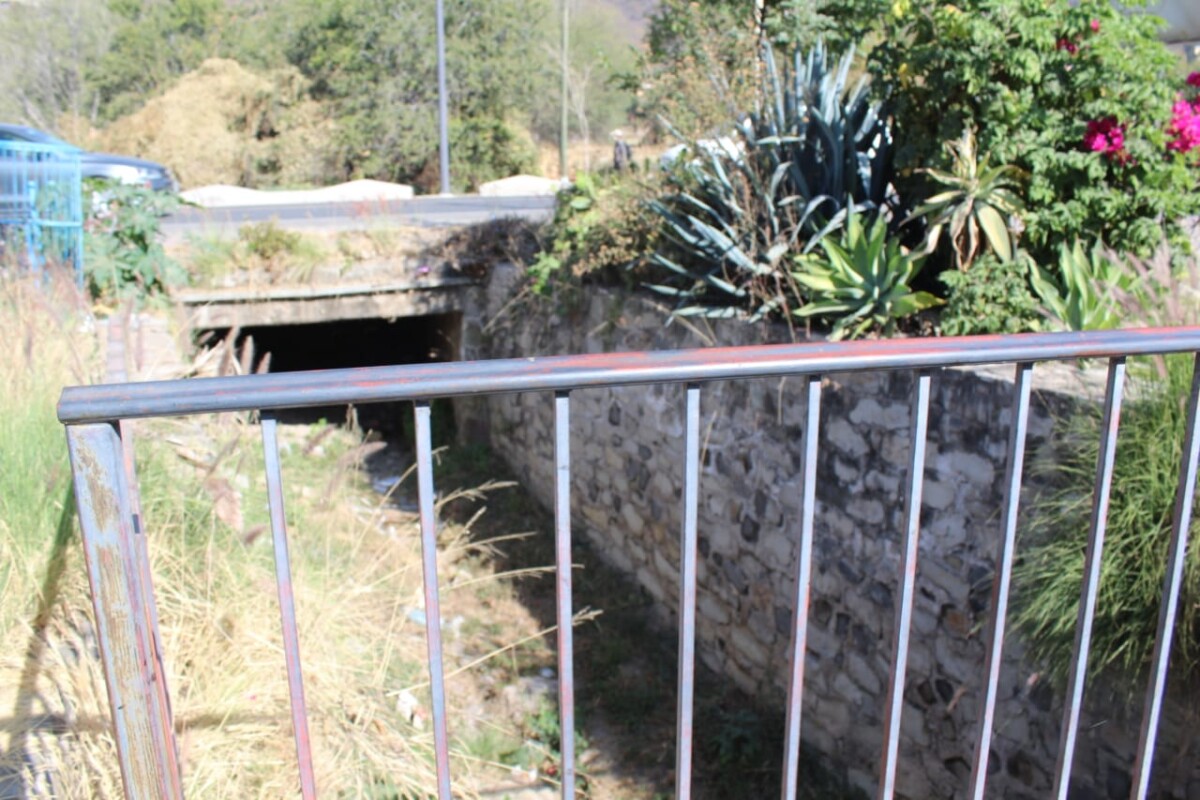
It is expected that, in the short term, there will also be a restriction in the passage through the creek, since there are people who not only throw garbage away there, but also are using it as a bathroom
Likewise, during the rainy season the gates will be opened to prevent the stream from damaging the gate again. «Although the lower part of the gate has bars to allow the water to pass through, we prefer to open the gates to prevent the gate from falling again,» said Macias Arceo.
He also clarified that in case it is necessary to bring things into the cemetery through the creek, permission can be given to the Delegation to open the gate. On the other hand, on occasions such as the Day of the Dead, the opening of this access will have a schedule.
Finally, he said that the gates will remain open from early in the morning, so that people can enter to maintain their tombs, in addition to asking for the support of those who attend to keep the space clean.
Translated by Colleen Beery
About 72 stores to be housed on Jocotepec market’s second floor
The new stalls made by City Hall for street vendors are already placed on what was to be the open balcony of the market. Photo: Héctor Ruiz.
Héctor Ruiz Mejía: There will be about 72 stores on the second floor of Jocotepec’s Mercado Morelos, according to the market’s tenants. Initially, 18 new spaces were designed to bring street vendors to the market from Morelos and Josefa Ortiz de Dominguez streets. That was not enough space, so 10 more new stalls were built. These wooden stalls have already been installed along what was intended to be the balcony of the second floor, so that “it would have an open space and a nice view,” said the vendors.
The current tenants say, “It was not as stipulated in the preliminary projects for the rehabilitation of the market.”
The new stalls, plus approximately 40 existing shops, will be on the second floor. But the street vendors have not yet been relocated and friction has already begun over space. Each store has an average of three merchants, so there will be approximately 216 people working in the area, not counting customers. Some vendors are concerned about the ability to maintain a healthy distance among all these people, and some say it is not possible.
“They are already trying to move my tables and no, I am not going to let them,” said one vendor who does not approve of the measure. “It is my space, and they have to respect it. I don’t know how we are all going to fit.”
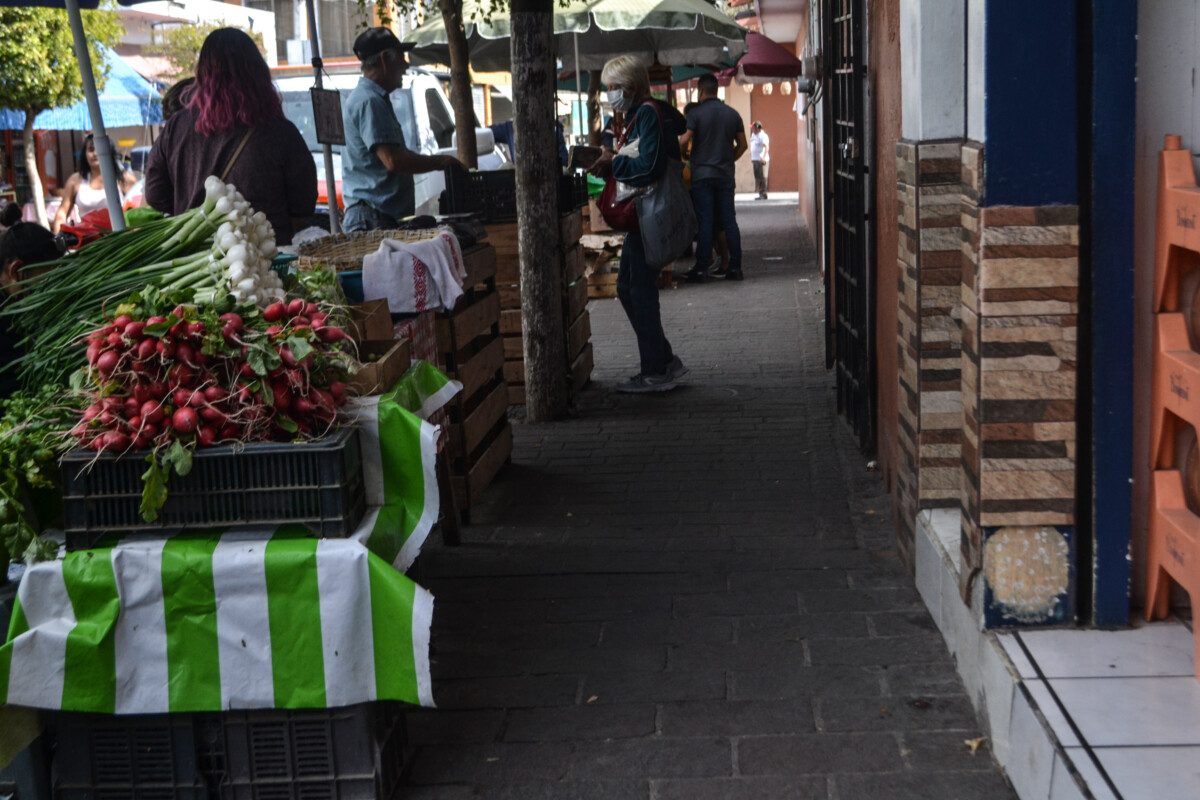
Vendors are worried about the reduced space available with the new stalls. Photo: Héctor Ruiz.
There is also uncertainty among the former street vendors because “although the stalls are well made,” they explained, they are very small in relation to the space needed for merchandise. Each module measures approximately one and one-half meters wide (about five feet).
In addition, the space between each stall is only about eight centimeters (just over three inches), which one person described as, “like sardines.” Both the current tenants and the street vendors who will be added try to visualize a positive scenario to coexist and “give life” to the mayor’s long-awaited project.
“We will see how it goes,” said one vendor. “The truth is that we are very worried about how we are going to make ends meet. We hope people will come.”
Translated by Mike Rogers
Postcard: Pelicans in Chapala
Jasmine Stengel. – American pelicans, or «borregones,» migrate every winter from southern Canada to the mild winter climates of the lakes of Jalisco and Michoacán. In Lake Chapala, up to 20,000 birds have been seen together.
The largest bird in North America, the pelican reaches 1.75 meters from beak to tail and three meters in wingspan. The largest specimens weigh up to seven kilograms.
Loudspeakers in Ajijic plaza repaired after several years of neglect
One of the loudspeakers located in the main square, in front of the kiosk.
Sofía Medeles (Ajijic, Jal.)- The speakers in the main square of Ajijic are singing again. This Monday, January 17, the two loudspeakers in front of the kiosk were repaired early in the morning, and by midday they were already playing melodies.
The Ajijic Delegado, Maximiliano Macías Arceo, said that the speakers had been in bad condition, with nests of insects inside. He is not sure how long they had been out of order. He said that they have been repaired and cleaned inside and out, which he believes was the first time in several years. «When we took them down, they were almost stuck together,” he said and then added that the Municipality of Chapala paid for the expense.
As for the programs broadcast, he said that they will mainly be radio stations like Fórmula Melódica, La Buena Onda, Radio Gallito, EXA FM, and others. «We may use them to broadcast announcements from the delegation or other presentations. We are waiting for instructions from the president on how to use them in the best way.”
The arrangements were well received by the residents who usually pass through or stay in the plaza. «It feels like before, it’s nice to listen to the radio, because sometimes in other locations you can’t get a good signal, here you can, and you can hear it very well. I came to eat my peanuts and sit down for a while to talk about the news,» said Don Nico, who usually goes to the plaza in the mornings.
The tentative schedule will be from 9:00 am to 4:00 pm. To date they have received positive comments from the villagers.
Translated by Nita Rudy
Requested approval from the Jalisco Health Board to hold the Chapala Carnaval
The last Carnaval celebrated in Lake Chapala was in 2020. Photo: Archive.
Jazmín Stengel. Despite the pandemic, the Mayor of Chapala Alejandro Aguirre Curiel has requested approval from the Jalisco Health Board to hold the Chapala Carnaval, beginning at the end of February and running through early March.
After a two year absence, the City Council has decided to grant planning of the Chapala Carnaval to individuals to organize the festivities this year. «The idea is that it will be done externally with support from the municipality,» municipal president Alejandro Aguirre said. He added that a group of people has expressed interest in taking on the responsibility.
While public gathering restrictions issued by the Health Board of Jalisco will remain valid until February 12, the Municipality of Chapala has applied for and is awaiting the necessary permit to hold the festivities. In this respect, Aguirre reflected: «we have to learn to live with it (Coronavirus), since we are all exposed.»
Translated by MaryAnne Marble
San Sebastián ceremony returns with lively religious celebrations
Entrance of the procession to the parish of San Andrés Apóstol, where the image of the saint was finally left
Sofía Medeles (Ajijic, Jal.)- Although San Sebastián was celebrated with a very modest ceremony, the neighbors of the neighborhood did not miss the opportunity to celebrate the saint with a mass in the neighborhood located in the north of Ajijic, sharing hot chocolate and bread, and in the afternoon, with a small procession to return the religious figure, enlivened with a musical group and the traditional masked sayacas.
«The celebration was good. It was a little smaller than other years, but it felt just as nice,» said one of the participants.
The January 20 mass was celebrated in the neighborhood of San Sebastian, as it is the one day of his feast.
During the morning, the mass was attended by no more than 50 people and all of them respected at all times the health protocols in force. At the end, chocolate, cinnamon and tachihual bread were distributed to the participants of the Eucharistic ceremony. «It was good, it was small, unlike other years, but it felt just as nice,» said Don Antonio, a close neighbor of the neighborhood.
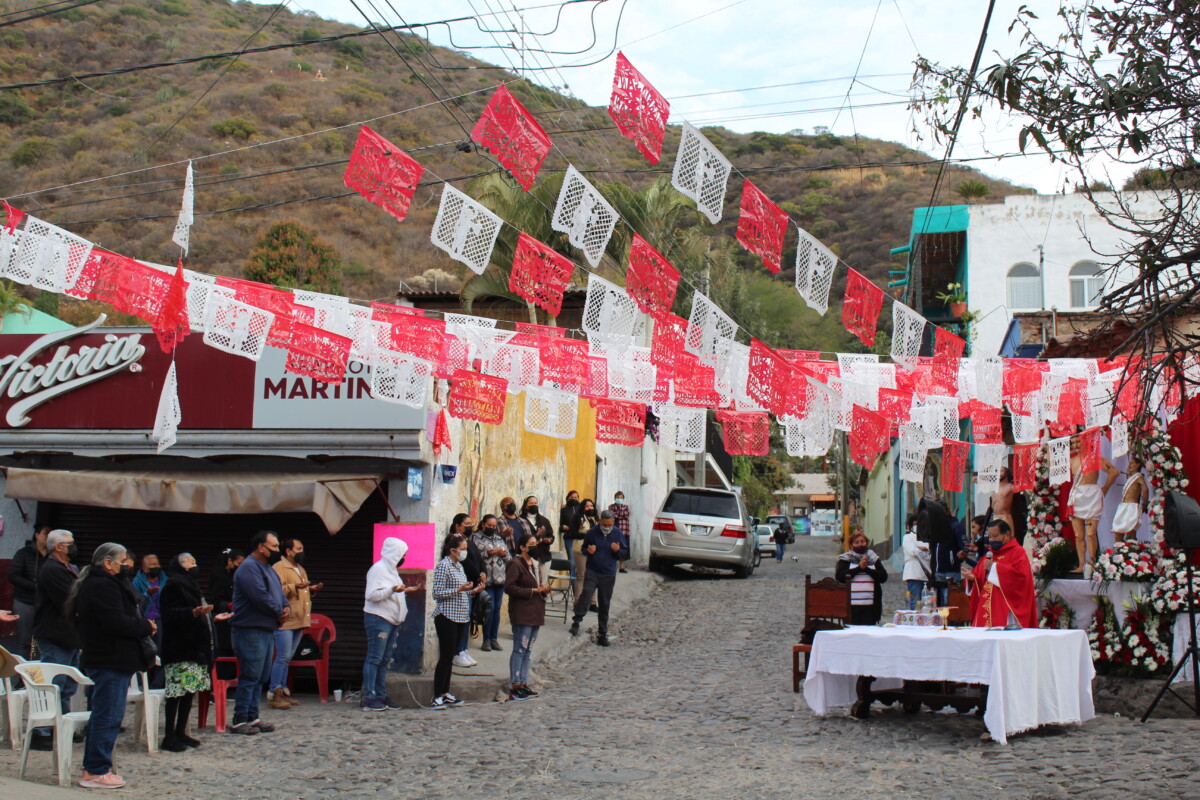
The neighbors of the neighborhood did not miss the opportunity to celebrate the saint with a mass in the neighborhood located in the north of Ajijic.
Later, during the procession, more people -approximately 70 people- could be seen. The procession began with the sayacas dancing, while behind them was a musical group, and at the end, San Sebastian, carried by four men.
Throughout the procession there was a group of children looking to be chased and floured by the sayacas. The sayacas danced, while all around them spectators enjoying the festivities and filming the scene.
«This is what one likes. There have already been so many big celebrations, like the one in Jocotepec. I don’t think there will be a fuss about this. There are only neighbors here and we are all wearing our masks. We had the pleasure of being together and also sharing a beer,» said Don Nico, minutes before the procession began.
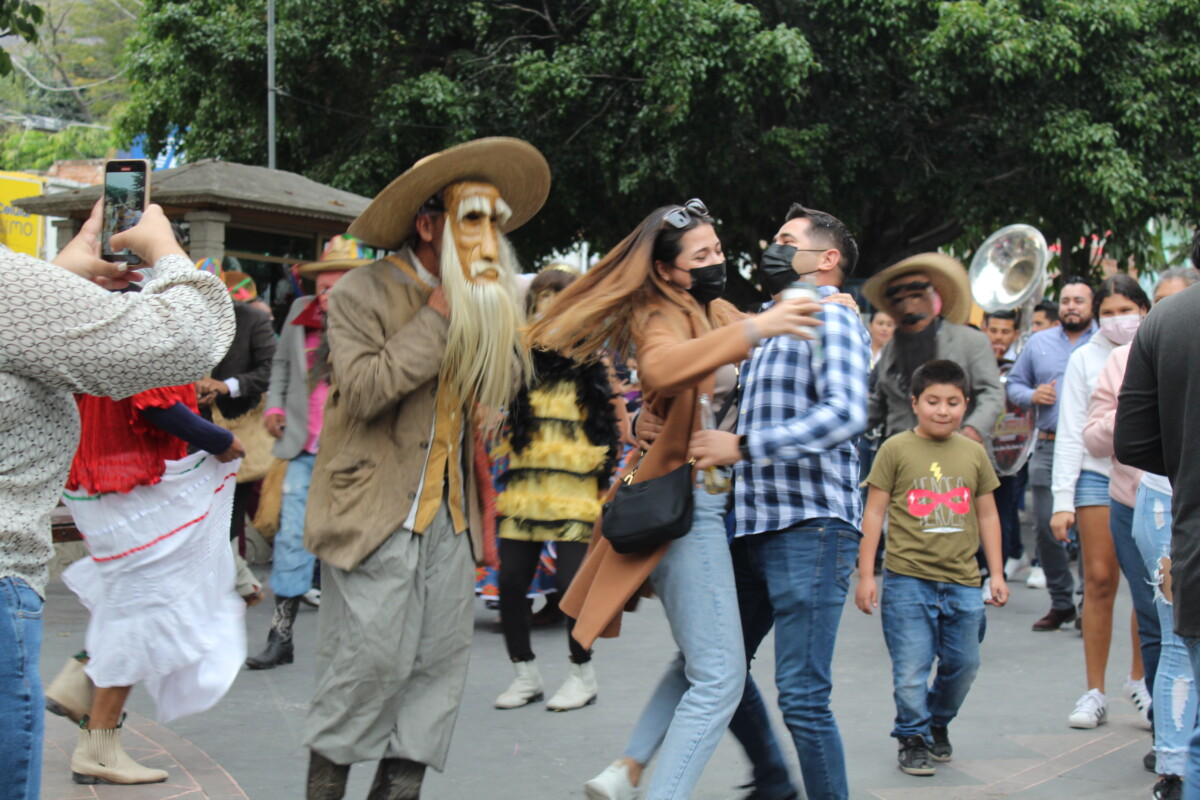
During the celebration, a couple of tourists joined the dance of the sayacas that accompanied San Sebastian on his route through some of the streets of Ajijic
Although the route changed a bit –through Zapata, Javier Mina, Guadalupe Victoria, a lap around the plaza, and finally Parroquia street—San Sebastian was accompanied by spectators all the way. In the plaza, a couple of excited tourists joined the procession to dance to the music of the band.
«We didn’t imagine there was going to be a parade, we just came to walk around because there was an opportunity. We didn’t know San Sebastián, much less imagine that here in the Pueblito Mágico he is so beloved,» mentioned a man who was sitting in the plaza.
In the end, only those carrying the image entered the parish of San Andrés Apóstol where the saint was taken, as well as a few companions, while the sayacas remained at the entrance of the parish, and the band played the mañanitas outside the temple. After leaving him, the people returned to the neighborhood of San Sebastian, located to the north of Ajijic.
Translated by Sydney Metrick
Lakeside Chronicles
The Señor del Monte religious festival has filled the streets of Jocotepec for more than 180 years on the third Sunday of January.
By María del Refugio Reynozo Medina
That time long ago, we could not even reach the threshold of the parish; Juan Pablo and I got lost in the human tide that swirled around the statue of the Señor del Monte. We were going against the current; after the rubbing of sweaty bodies in which we could even feel each other’s ribs, we returned to the little truck that had taken us there and was about to leave us. We could not see the Señor del Monte.
More than 20 years have passed since that day. Today, half an hour before the start of the procession, the atrium begins to receive the pilgrims who continue to arrive, but do not flood the enclosure. According to some parishioners, this year there was half the attendance compared to the years without the Covid-19 pandemic. Some five thousand people this year, according to data from the Civil Protection Office of the municipality of Jocotepec.
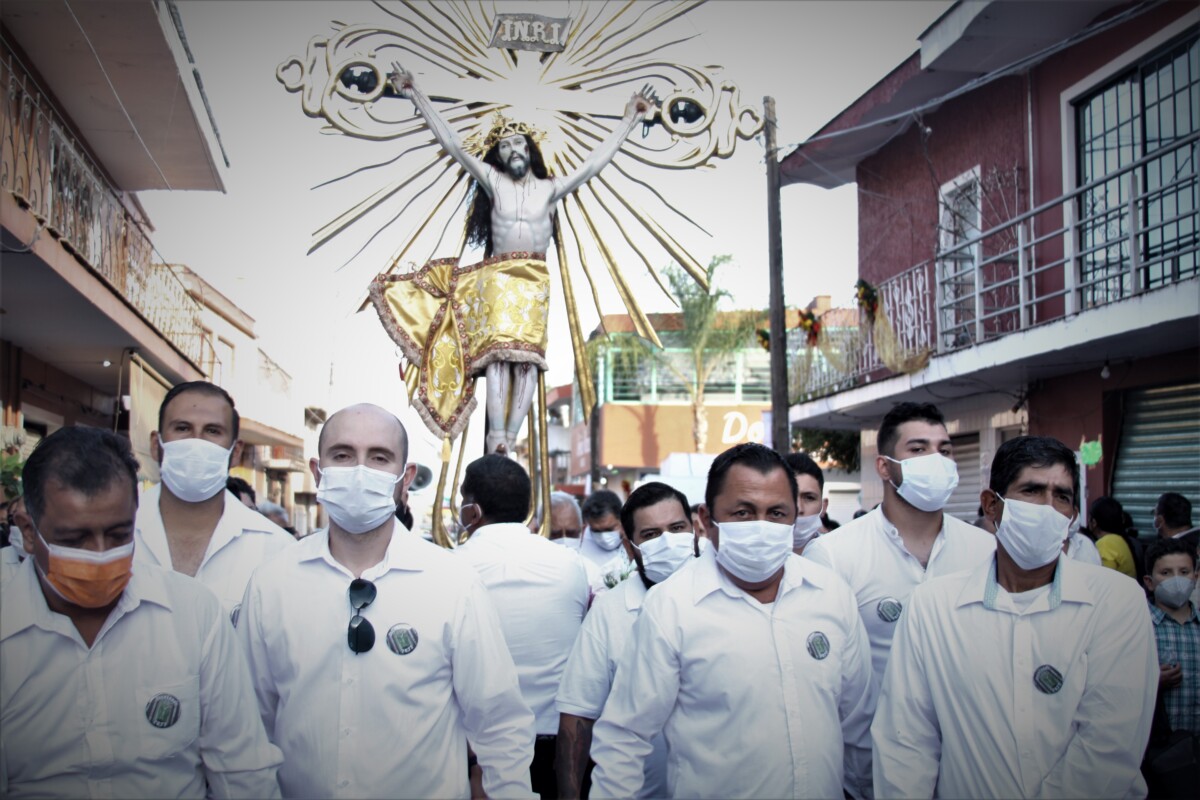
The positions of the honor guard are inherited from generation to generation to the firstborn.
In the temple, the members of the honor guard are already behind closed doors preparing the Señor del Monte for his journey, as has happened every third Sunday of January for more than 180 years.
The Jocotepec chronicler Manuel Flores Jiménez, marks the year 1834 as the first occasion that the ancestors celebrated his «miracle,» then November 8, 1833, as the date in which they also congregated, to swear in writing to take him as the patron saint of their lives. In 1918 the oath was renewed.
The honor guard is composed only of men, all direct descendants of those who took the original oath. There are about 150; most are adults, the youngest is 11 years old. They are grouped by families, each one with a specific task such as organization, preparation of the image for its journey and care and custody of the patron during the procession.
Belonging to the honor guard is a privilege that is inherited from generation to generation and becomes a gift that arrives by destiny.
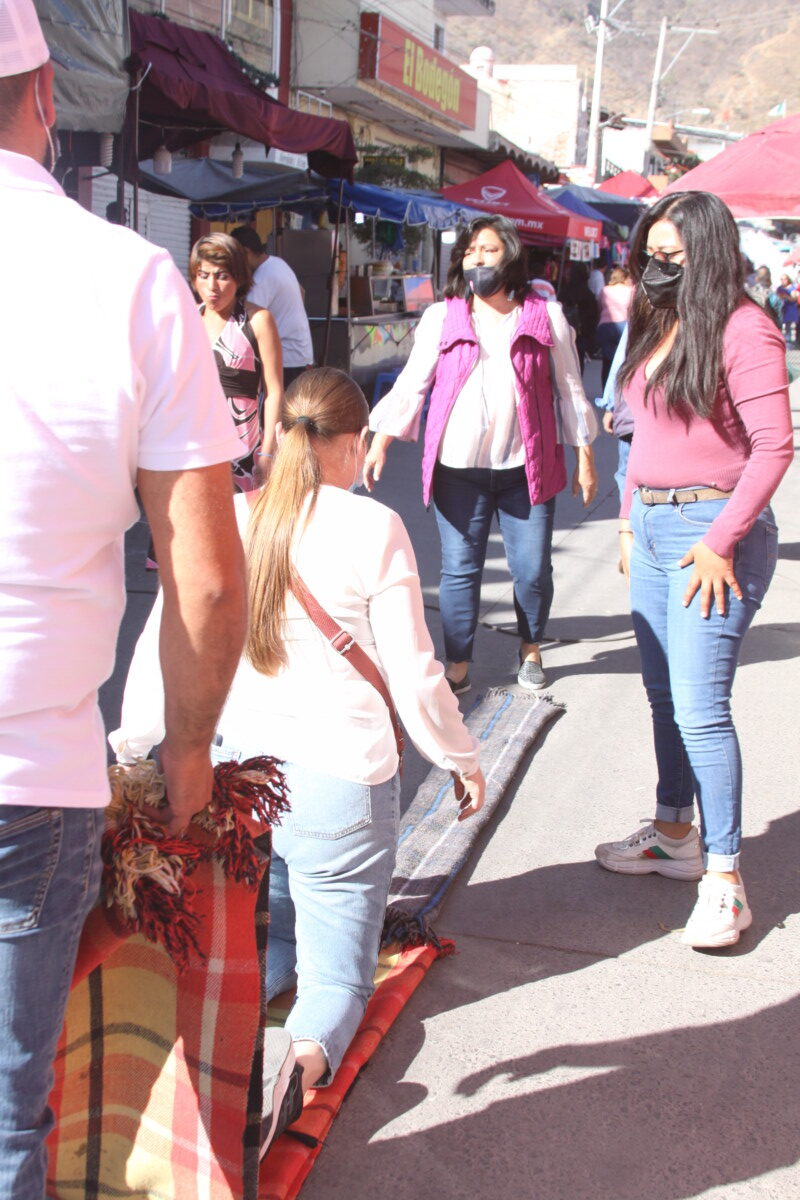
Some people advance to meet the procession kneeling to give thanks for favors received or to ask for help from the Señor del Monte.
The men of the honor guard are dressed in white shirts, surrounding the image that has already been taken down from the altar, and finish preparing it for its procession. There are few women in the place; not even ten, they are direct relatives of the members of the honor guard. It was not until about ten years ago that women were allowed to enter.
The Lord of the baptistery is already downstairs, as his ancestors called him before he became their official patron saint, according to the records of the chronicler Flores Jiménez.
The Christ directs his gaze to the sky with half-open lips, has a sharp nose, beard and black hair. He has his arms extended on the wooden cross that appears to shine; that cross «morena de sol» as father Benjamín Sánchez calls it in the Romancero de la vía dolorosa, is bordered with golden rays.
The Señor del Monte wears a coppery cloth with rich embroidery, and on his head, a splendorous crown made of prayers always heard, because «this Lord is very prodigious.»
“I am one of his miracles,» says Manuel Ibarra, who emerged victorious from a cancer diagnosis. Before going to the hospital, he prayed to the Señor del Monte for his health and touched the body of the Christ figure with a piece of absorbent cotton, to carry it with him in the battle against the disease. That was 12 years ago.
Jésus Pérez is the grandson of Cándido Pérez, the latter was present at that historic oath and appears in a painting, «The Oath» which is in the sacristy of the parish. Now Mr. Jésus participates with his son Óscar Pérez and his grandson Alejandro Pérez.
Minutes away from the beginning, the bells toll with a festive flavor, a human fence begins to form and dozens of eyes look anxiously at the huge wooden door.
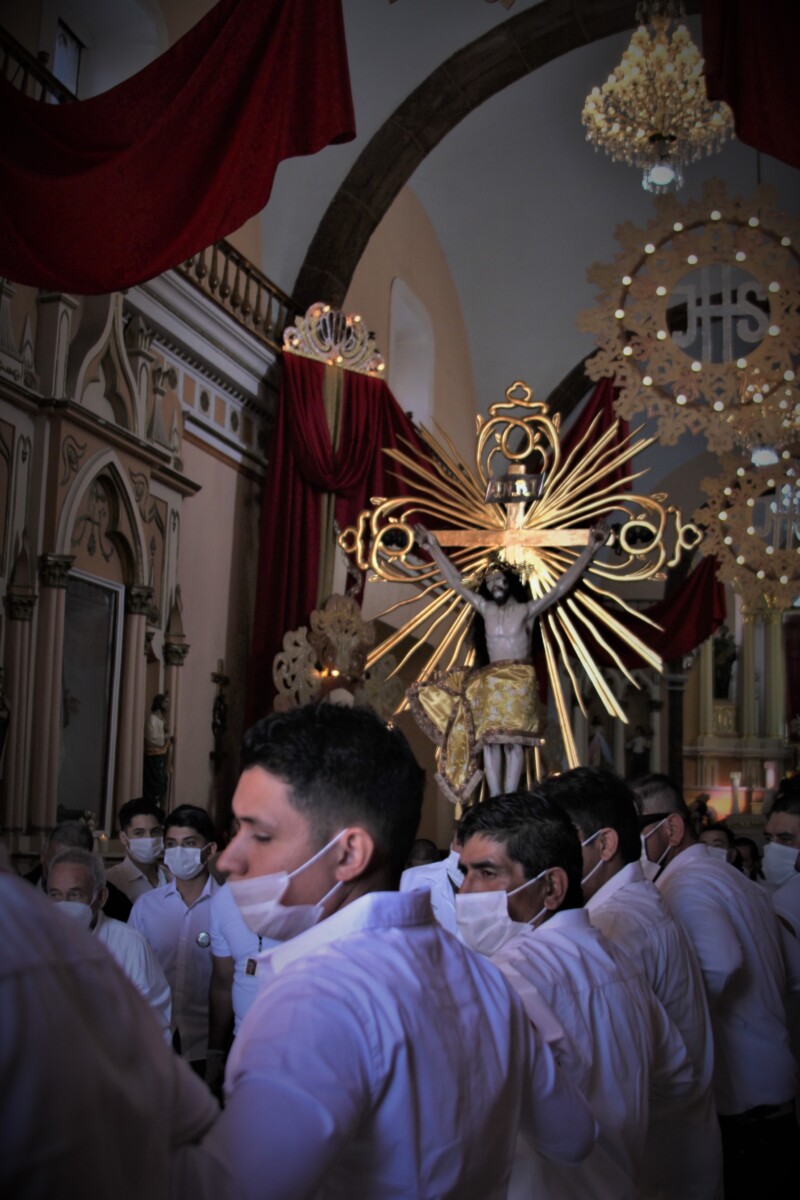
The men of the honor guard intertwine hands to leave the temple with the image at the beginning of the procession.
-Long live the Señor del Monte!» shouts a man’s voice, seconded by another female voice.
-Long live! ¡Viva!
The fervent voices respond and the door opens.
The faithful crowd moves to meet the crucified Christ. The drums of the dancers sound and the pilgrimage begins.
Leading the procession is a girl of about five years old dressed as a dancer, she emulates the steps of her elders and glides safely across the width of the street.
A man and a woman wear white t-shirts with «Danza por manda» written in black letters. With them are more people who dance throughout the procession in orderly rows. There is also the marching band, a young man on stilts who helps with the order of the walkers, and a mariachi band.
A female voice prays the rosary and sings over a loudspeaker from a cart.
Some streets are adorned with bows of red and yellow satin ribbon, also with arches of fresh flowers.
The Señor del Monte is carried by a guard of 20 men, one of them walks backwards, every so often along the way they are exchanged for another group of 20. Five guard changes are made along the pilgrimage, in total there are one hundred men who help carry the patron saint.
«Vivas!» to the Señor del Monte are heard along the route, tearful eyes seek the face of the crucified, there are many tears shed, many prayers in silence, which are announced by the tearful look of those who come out in their path.
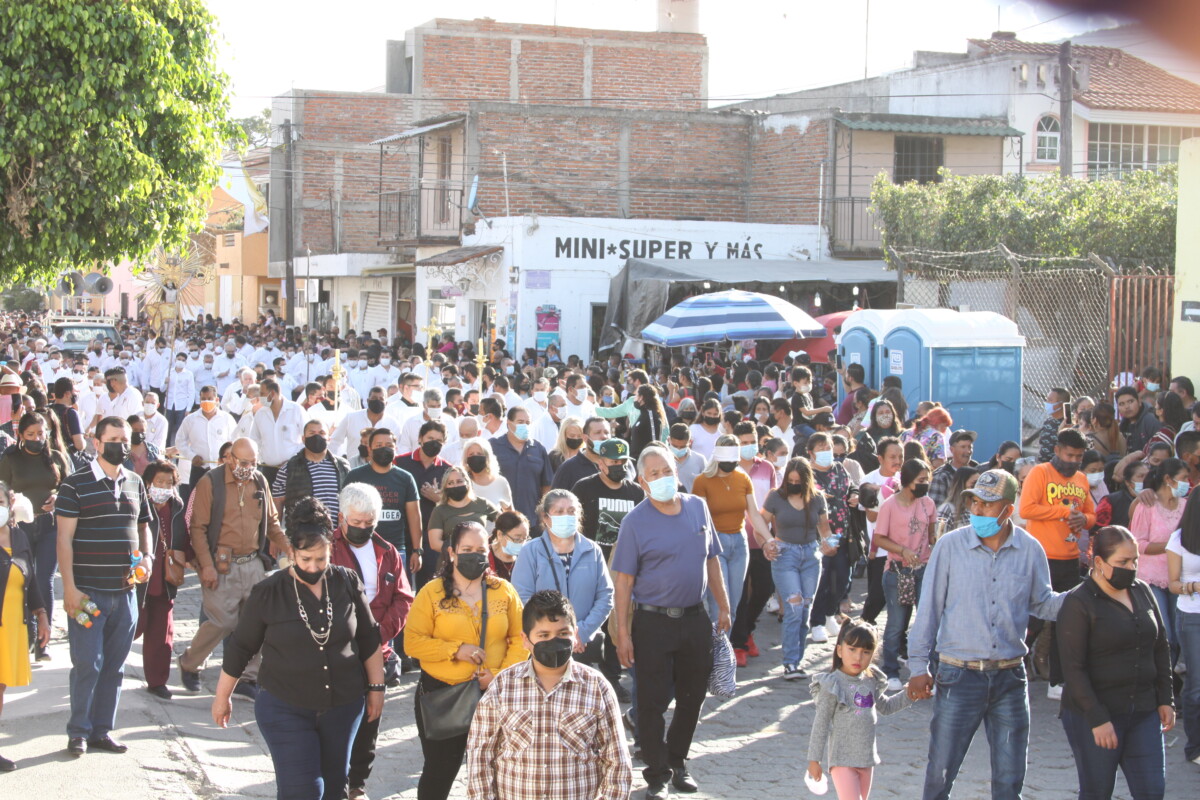
With the attendance of about five thousand people, according to data from the Civil Protection Department of Jocotepec, the procession in honor of the Señor del Monte took place.
Some people go barefoot and blindfolded; a line of men and women who advance kneeling in the opposite direction to the procession, go to meet the image, supported by folded blankets thrown on the floor.
Civil Protection officers watch over those who are kneeling and help them to get back up.
The khaki uniforms of the officers and their yellow helmets contrast with the brightly buttoned suits of the mariachis and the white shirts of the guardians of the faith.
The officers, the faithful, musicians, and priests all converge in an ancestral procession, dedicated to that ancient Lord of the baptistery who summons thousands because his presence radiates something indescribable.
Translated by Kerry Watson
Fotonota: Baja Chapala su nivel
Foto: El lago de Chapala. Foto: Héctor Ruíz.
Redacción. – El lago de Chapala ha perdido 16 centímetros en esta temporada de estiaje, informó la Comisión Nacional del Agua (Conagua) Jalisco.
El vaso lacustre se encuentra al 73 % de su capacidad, mientras que las presas cuentan con 87% de almacenamiento.
Anuncia Chapala la primera carrera de ciclismo de montaña en la ribera
Jazmín Stengel.- Con una premiación de hasta 60 mil pesos en su primera etapa, el Ayuntamiento de Chapala, la Asociación de Ciclismo del Estado de Jalisco y la familia Rayo, anunciaron la primera competencia de ciclismo de montaña “Serial Chapala Summit 2022”.
Durante la conferencia de prensa que se llevó a cabo el martes 18 de enero, en la zona restaurantera de La Rampa del malecón de Chapala, los organizadores expusieron que el serial constará de cuatro etapas, se realizará en los municipios de Chapala, Ixtlahuacán de los Membrillos y Jocotepec, y será para seleccionar a los representantes de Jalisco en las competencias nacionales.
La primer etapa dará inicio en la cabecera municipal de Chapala, el 26 de febrero a las 4:00 de la tarde, comenzando con el circuito “Short Track”, es decir, dar vuelta a la manzana entre las calles Juárez, Zaragoza, López Cotilla y volver al punto de partida en Juárez, a la máxima velocidad posible.

Freddy Rayo, promotor del deporte y miembro del Comité Organizador del Serial Summit Chapala 2022, durante la presentación de la competencia.
En este circuito sólo podrán participar mayores de 18 años y serán divididos en seis categorías diferentes según su nivel deportivo, explicó Freddy Rayo Razo quien forma parte del Comité Organizador de la competencia. Las premiaciones planeadas para el primer día de competencias contarán con una inversión de 20 mil pesos.
El segundo circuito será de estilo “Cross Country” y se llevará a cabo el día 27 de febrero a partir de las 9:00 de la mañana al comienzo del Camino Real, en el poblado de San Nicolás de Ibarra, rumbo a la presa, con un recorrido de casi seis kilómetros.
Durante el segundo día, los atletas serán divididos en 25 categorías diferentes incluyendo las infantiles, juveniles, máster, élite y principiantes. La cantidad de las premiaciones para el segundo día de competencias será de 40 mil pesos.
La siguiente etapa se prevé realizar en Ixtlahuacán de los Membrillos, de manera tentativa el 1 y 2 de abril, sin embargo, aún se está esperando la confirmación de la Asociación de Ciclismo del Estado de Jalisco para su validación. Al igual, las fechas de Jocotepec en el mes de junio y la clausura que se planea con un maratón entre los poblados de Atotonilquillo, San Nicolás y Santa Cruz de la Soledad, aún están por definirse.
Mientras tanto, para la primera etapa, los organizadores esperan hasta 300 participantes con un aforo de 500 personas o más, por lo que se están tomando en cuenta las medidas de sanidad recomendadas por la Mesa de Salud Jalisco dentro de la logística del evento.
El propósito de esta actividad «más que atraer al turismo deportivo, es incitar a los jóvenes a participar en actividades realmente saludables», agregó el alcalde de Chapala, Alejandro de Jesús Aguirre Curiel, durante la conferencia. Ya que, como dijeron «un deportista más, es un drogadicto menos».

“Más que el turismo se trata de incitar a los jóvenes a participar”, dijo Alejandro de Jesús Aguirre Curiel, presidente de Chapala.
Es por ello que, los organizadores del “Serial Summit Chapala 2022” decidieron dar inscripciones gratuitas a todos los niños originarios de los municipios donde se esté llevando a cabo la competencia. Es decir, durante la primera etapa, los menores de 14 años de edad de Chapala podrán participar sin costo alguno.
Por otra parte, los adultos pagarán un monto de 100 pesos general en la modalidad “Short Track”; mientras que para el “Cross Country” las inscripciones están en 350 pesos para los adultos y 150 para los niños. Estos incluyen los paquetes deportivos con playera, número de competidor, GPS por cobertura en caso de accidentes y sellador 600ml PC Bikes.
«La dinastía Rayo, son pioneros en el ciclismo… Desde pequeño veo ese tipo de carreras donde ellos eran los organizadores y ahora, les deseo lo mejor en esta nueva modalidad de montaña», expresó al alcalde antes de despedirse, ya que, «se busca poner en los máximos niveles del ciclismo estatal al municipio de Chapala».
Inscripciones:
Las inscripciones ya están abiertas y hasta el día de la competencia, 26 de febrero a las 2:00 de la tarde. Ya sea en las instalaciones de Bicicletas Rayo, tanto en Ajijic carretera poniente 9b con el número de contacto 33 1292 4228; como en Chapala, calle Juárez 588 con el número de contacto 33 2130 0393. Para los atletas foráneos que desean participar se habilitó una cuenta en Bancomer con el número 4152 3137 9395 6066 y la línea telefónica 33 2791 6475.
Los paquetes deportivos de la competencia serán entregados el sábado entre las 4:00 y 6:00 de la tarde y el domingo de 7:30 a 8:30 de la mañana en sus respectivas mesas de inscripción, momentos antes de dar inicio.
© 2016. Todos los derechos reservados. Semanario de la Ribera de Chapala


